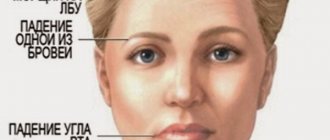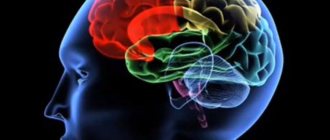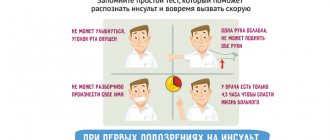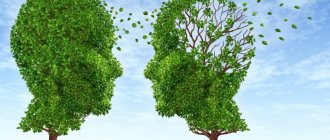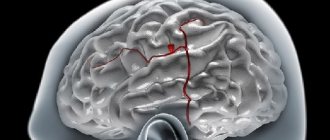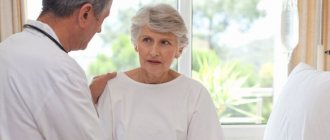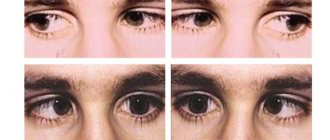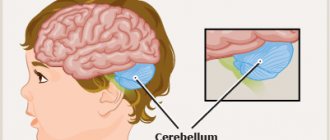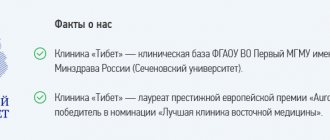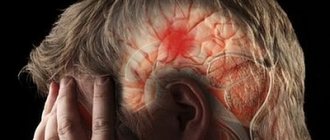Article from our reader
In December 2014, I had a stroke. From the moment we were discharged from the hospital, we began restoring the damage. I always wanted to understand how long this “hemorrhoids” would last. I asked my family and doctors about this, and looked for information on the Internet. In the end, I realized that exactly, when and how this will all end, no one will tell me.
Everyone has different strokes, different consequences, and everyone needs different time frames for recovery.
All the same, I needed at least some kind of guidance. After a stroke, it was not at all smiling to move for an endless amount of time in an unknown direction, with an unknown ending. I was not satisfied with general phrases from “smart” articles on the Internet like: “... recovery times may vary...”
Since the end of January 2020, I have been keeping a diary every day . I started taking notes as soon as I could point my finger at the iPad. I wrote down as best I could what was happening. Fixed changes that were significant for us. He noted the positive and negative facts of our restoration.
Later, using the diary, I combined and organized the information for two years from the moment of the stroke. When I re-read the diary, I was very worried. Here are the specific dates and events of my recovery:
Recovery periods
Recovery after a hemorrhagic stroke is divided into three periods:
- Early – the first six months after a brain accident. Late – begins after the sixth month and lasts up to a year. Manifestations of residual effects begin after a year and can last for a long time.
Rehabilitation in the first year after suffering pathology brings the most significant results. All methods of recovery, if possible, are performed in the first twelve months after a hemorrhagic stroke.
Numbers, numbers, numbers...
“I was paralyzed,” “suffered a stroke,” cerebral hemorrhage, softening of the brain, apoplexy—all this is a stroke
.
half a million
die from acute cerebrovascular accident .
Every fifth person
who has had a stroke develops a second acute cerebrovascular accident within a year, in which the likelihood of death increases.
According to statistics, in the structure of general mortality of the population, stroke as a cause of death ranks third
after coronary heart disease and malignant neoplasms.
Stroke is a disease that can make a person disabled. After it, approximately 60 percent
of patients become disabled.
Many of them find themselves confined to a bed for life, unable to move independently and even provide minimal care for themselves. In the minds of the average person, stroke is a disease of older people. Perhaps this was the case twenty
ago.
Nowadays, strokes are getting younger every year. Cases of stroke in 30-40 year old people are not uncommon. One third
of all patients are people of working age.
At the same time, it must be emphasized that the older a person is, the higher the risk of developing a stroke. Every ten
years, the risk of developing acute cerebrovascular accident approximately
doubles
.
Russia ranks 2nd
in the world in terms of the number of strokes.
Bulgaria is in first place, China is in third. In Russia in recent years, the increase in the incidence of stroke is 5 times higher than, for example, in the USA. In Moscow alone, 80-120 people have a stroke every day. In our country there are 1.5 million people who have had a stroke. The diagram shows the dynamics of stroke incidence per 1000 population over the past decades.
Basic rules for successful rehabilitation
Hemorrhagic stroke
During the recovery process, you must adhere to the following rules as much as possible:
- The earliest possible start of recovery - already during the period of hospital treatment it is necessary to take measures to recover after a stroke.
- Exercises should be carried out regularly, without weekends.
- Each patient must adhere to an individual training schedule depending on the impaired functions. It is necessary to start with easier exercises and further complicate them.
- Rehabilitation methods should be varied
Rehabilitation goals:
- Restoring primitive skills (self-care, simple housework).
- If possible, restore the person’s ability to work and return him to his previous place of work.
- Preserving the social needs of the victim.
- Preventive measures to prevent recurrent strokes.
After a hemorrhagic stroke, the patient has to relearn all these skills. The chances of restoring lost functions increase if the patient is helped by medical workers, psychologists, family and friends.
The first 100 days after a stroke
11 days. He left the hospital and went home in a wheelchair. 17 days. Celebrated the New Year. I didn’t want to be in bed on holiday. My son dragged me into a chair. I was able to sit for 10 minutes. propped up on all sides with pillows and back into bed. 20 days. We bought a walker. I couldn't even stand on them. 21 day. Got out of bed and stood on the walker for 5 seconds. I'm learning to stand with support. 23 days. I'm learning to sit down. 26 days. We started doing gymnastics on the bed. 27 days. I'm learning to sit. 30 days. From the bed I reached for the fallen TV remote control and was able to take it in my hand. I managed to sit in bed for 15 minutes. We started doing gymnastics while standing using a walker. 31 days. My son bought me an exercise bike. To my question: “Why not big?”, he answered: “So that he doesn’t go far”))). We started learning to stand up.
32 days. First haircut after a stroke. My mother-in-law cut it with a clipper, and it turned out better than it was. Crawled out of bed onto an exercise bike, which was placed next to the bed. 33 days. I'm trying to write SMS on my phone. I don't hit the letters. With the left hand there is no chance at all. But I managed to hold the phone in my left hand. 35 days. With a walker I walked from the bed to the kitchen. The distance is not marathon - 12 meters. I was able to go online and started reading all sorts of crap about strokes. 36 days. I am learning to stand using a walker. I had breakfast with everyone, “like an adult” at the table. He held the spoon himself and drank from the cup. Trouble-free)). I learned to roll over from side to side while sleeping. My sleep improved immediately. I started learning to walk with a walker. 37 days. I rode an exercise bike for 7 km in three passes. or 17 min. The total mileage on the exercise bike exceeded 100 km. I'm learning to make turns and turns on a walker. 39 days. I made the first, long, autonomous run on a walker along the route bed-kitchen-bathroom-bed. Chkalov is resting))).
40 days. Relatives and friends could eat salad and drink, but I ruined everyone)). In the evening I got to the barbecue. 41 days. We started getting out of bed regularly. 42 days. My teeth on the left side felt cold water. I spoke on the phone for the first time. 43 days. For the first time since the stroke, I slept well all night, without any crap. 44 days. We walk in the fresh air. 45 days. The first time I managed to put on a T-shirt myself. I was able to see my face in the mirror. Everything is double and out of focus. But something is already visible. 47 days. He tied his shoelaces himself, put on his jacket and zipped it up. 49 days. I managed to walk hand in hand down the street... 52 days. The 14th of February. Holiday. My wife and I were dancing for the first time when our favorite song started playing on the radio. 53 days. The first three steps without a walker. 55 days. Did five squats. 56 days. I walked from the bed to the kitchen without a walker. Dinner at a friends restaurant. They set up a chair especially for me.
57 days. Got up from the bed without support. The first 10 steps without support, on the street. 58 days. We received guests. Our close friends came. 59 days. The eyes began to move synchronously. 60 days. Walked about 100 steps without support, on the street. 64 days. First time wearing alpine skis. I started walking with a ski pole in my right hand. 65 days. Walked about 400 meters without support. 68 days. Learning to walk on stairs. 77 days. First ski descent. From 78 days. I drove a car along the village paths for the first time. The streets were empty. There are no casualties.)) 79 days. We folded the walkers and put them against the wall, and then continued without them. 80 days. The most independent morning. Exercising, showering, dressing, breakfast. Dressed completely independently. Then I got dressed to go out. I went down the stairs on my own without support or safety net, leaning against the wall. 81 days. Refused to wear “one-eyed” glasses. Day 82. Started sitting at the table on a stool, rather than in a chair. I spent the entire day out of bed. I was able to put on my T-shirt while standing. We were on a hill and made four descents. Day 83. I walked a total of more than 4,000 steps during the day. Day 85 On foot, with ski poles, I went down and up a gentle slope, and then made three descents on skis.
88 days. Dumbbells 1 kg. I sent it to the “archive”, a walker, and started working out with 1.5 kg dumbbells. We went to the store and bought groceries. While the grocery car sets the direction of movement, not me)) 89 days. Without support or support, he climbed the street stairs to the house. I walked a total of more than 5,400 steps during the day. 90 days. I shaved myself, for the first time without any cuts. Luckily there are no straight razors anymore. I wouldn't last long. The doctor came and told me to lose weight. Let's go on a diet. 91 days. I was able to stand on one leg, with support against the wall, and put on jeans. I did 5 push-ups and 10 squats while exercising. I saw the first snowdrop in our garden. I was able to trim my fingernails myself. 92 days. We were on the hill. I climbed the lift completely independently. 93 days. I drove the car into the lot, through the gate, and almost demolished it)). Played volleyball. Standing, without support. 94 days. I began to count the distance traveled in a day in pairs of steps, as I began to walk a lot. Walked 4400 pairs of steps = 8800 steps. I began to learn to walk up the stairs one step at a time, rather than using side steps. 95 days. Increased the load on the left hand. Added exercises and repetitions. 99 days. I threw darts at a dart board, eight out of ten missed the target.
100 days from the moment of stroke (3 months). Intermediate result of recovery:
- I walk without support, 150-250 m at a time.
- Complete refusal of walkers.
- I go up and down the stairs on my own using the wall as support.
- The left leg is very weak and inactive, but there is improvement.
- Mastered going outside and moving in a car.
- Showering, washing, toileting, dressing - complete independence.
- My speech has improved, I speak more and more clearly.
- Sleep improved.
- I eat while sitting at the table, with a spoon and fork, without gouging out my eyes)). It turns out to hold a cup in your right hand and drink from it. I can't do this with my left hand.
- I look with both eyes. The ghosting and defocusing remained, but not significant. Complete rejection of “one-eyed glasses”.
- It turns out to go down a gentle hill on skis and then go up on a rope tow...
- Daily exercise, approximately 1 hour.
During the first three months of recovery after the stroke, I managed to learn basic movements and simple skills for everyday life. From “lying down” I turned into “walking” and even “sliding down a mountain.” Got stronger and adapted to the current situation.
After the passage of time, we can say with confidence. For us, the first three months of recovery after a stroke were the most difficult. To be honest, this is the most difficult time in our lives.
Recovery
Recovery after a hemorrhagic stroke includes:
Healthy lifestyle
In order to increase the body's capabilities and direct them in the right direction, it is necessary to give up bad habits, such as smoking and alcohol, adjust diet, and lose weight. Scientists have proven that the quality of life and its duration in smokers is significantly different from non-smokers. It is necessary to give up alcoholic beverages in all forms. Even a single dose of alcohol significantly increases the risk of another stroke. To quickly restore all body functions, it is recommended to adhere to proper nutrition, eat as many vegetables and fruits, lean meat and fish as possible.
Taking medications
Taking medications
Surviving neurons can partially take over the function of dead ones, which leads to an increase in the load on them. In addition, neurons that have temporarily lost their functionality due to exposure to a hematoma can be restored. To quickly restore their function, drugs that resolve the hematoma are used.
Recovery after a hemorrhagic stroke should not be limited to inpatient treatment immediately after a hemorrhage in the brain. Three months after the stroke, you need to go back to the hospital to undergo a course of maintenance therapy. It is advisable to undergo maintenance therapy every three months for a year, then the chances of recovery will increase significantly. In the medical institution, medications will be administered in the form of injections. After discharge from the hospital, the same medications are recommended to be taken orally.
Maintenance medications include:
- Vitamin complexes, special attention is paid to B vitamins.
- Neurometabolic stimulants are drugs that are widely used in neurology. These drugs have a positive effect on brain function. Their most popular representatives are Cerebrolysin and Actovegin.
- Medicines that improve neuromuscular conduction. Medicines stimulate, activate and restore impulse conduction.
- Medicines that regulate blood pressure. To do this, a person suffering from arterial hypertension is prescribed drugs that lower blood pressure, which he must take constantly (amlodipine, Concor, lisinopril).
Psychotherapy
Life for a person who has suffered a stroke is divided into before and after. Many people fall into depression; therefore, psychological help is extremely important. Psychologists say that almost all patients have a violation of psychological and social adaptation. This is caused by impaired motor and speech skills. The patient should be in a friendly psychological environment, in the creation of which relatives should take an active part. Classes with a psychologist are usually held 1-2 times a week for six months after discharge.
Physiotherapy
Electrical stimulation
In the absence of contraindications, physiotherapy begins 21 days after the hemorrhagic stroke. The goal of physiotherapy is to improve brain function and improve blood supply to the brain. By complementing drug therapy, physical therapy increases the chances of a speedy recovery. The following procedures are highly effective:
- Electrical stimulation – electric current pulses promote muscle contraction, the parameters of the pulses are most closely approximated to natural ones. Electrical stimulation helps return muscle tone to its normal state. This procedure is indispensable in restoring motor function.
- Magnetotherapy is the effect on the body of a low frequency magnetic field. The procedure reduces blood pressure, improves innervation and innervation of muscle tissue.
- Laser therapy has a positive effect on blood cells and blood vessels. Laser therapy helps increase vascular tone, prevents the formation of blood clots, and improves blood supply to organs.
In addition, rehabilitation after a hemorrhagic stroke includes thermal effects and ultrasound.
Folk remedies
Traditional medicine is used as an additional method to treat such a serious disease. Before using folk remedies, it is recommended to consult with your doctor. Tinctures from cones, decoctions of sage, rose hips and others are widely used among folk remedies.
Physiotherapy
Exercise therapy
Experts believe that it is impossible to achieve a positive effect in treatment using medications alone. Drug therapy should be supported by gymnastic exercises. Regular, persistent exercise can put a person on his feet. A set of exercises must be prescribed strictly individually for each patient.
The process of performing exercises should be monitored by a doctor. The exercises performed by a person become more complex every day and affect more and more new muscle groups. A set of exercises is prescribed depending on the severity of the disease.
At the initial stages, gymnastics consists of the correct position of the patient, passive exercises, and breathing exercises. During the healing process, the load increases.
Massage
Massage is prescribed as an additional treatment method during the rehabilitation period. The procedure is prescribed in the first month after a hemorrhagic stroke and must be performed by a specialist. Massage improves blood circulation, prevents the formation of contractures, reduces the severity of pain, and reduces muscle tone.
Contraindications for massage: malignant neoplasms, fever, mental disorders, blood diseases, convulsions.
Classes with a speech therapist
The quality of life with speech disorders is sharply reduced, so for such patients, sessions with a speech therapist are extremely important. The process of speech restoration can take up to a year. The person’s relatives should talk to him clearly and slowly, ask questions, the answer to which can be negative or positive. A speech therapist should help re-pronounce sounds and words. Work to restore speech must begin as early as possible. Speech rehabilitation after a stroke is an essential component of the recovery program.
Positive and negative factors affecting the prognosis of stroke
According to statistics, approximately 8% of people who have suffered a stroke can return to their previous lives and are recognized as able to work, 48% of patients after a stroke are recognized as able to work with limitations, the rest require care. A neurologist at the Yusupov Hospital will conduct the necessary diagnostics and select effective treatment that can help minimize unpleasant consequences.
Factors influencing the prognosis of life after stroke include the following:
- age - the older the patient, the less chance of full recovery. In patients over 60 years of age, the mortality rate is above 90%;
- affected part of the brain - if vital centers in the brain die, the consequences are difficult to predict. Even with timely assistance, a person may remain disabled or die;
- prevalence of the lesion - the larger the area of the lesion, the more vital functions the patient loses;
- if a stroke occurs against the background of atherosclerosis or hypertension, then you should prepare for more severe consequences;
- When cerebral tissue edema forms, in most cases the patient will develop neurological symptoms.
A positive prognosis for stroke is possible if:
- confirmation of a small lesion;
- maintaining consciousness;
- normal blood pressure;
- absence of atherosclerotic changes in blood vessels;
- absence of arrhythmia and other heart diseases;
- under 40 years of age.
It has also been proven that a patient who has a creative profession or has constantly succumbed to moderate mental stress has a better chance of full recovery. The possibility of regaining lost functions and skills will depend on social, psychological factors and the patient’s readiness for long-term rehabilitation.
The prognosis for a stroke is influenced by medical factors, including the time of admission to the intensive care unit or intensive care unit, skillful first aid, high-quality and timely diagnosis, and timely start of rehabilitation. At the Yusupov Hospital, the patient is immediately sent to the neurology clinic, where experienced doctors work with him. After providing basic therapy and drug treatment, the patient is transferred to a rehabilitation clinic. An integrated approach to treatment allows you to restore lost functions as effectively as possible.
Why does a stroke occur?
WHO experts believe that in the 21st century, stroke will become the most common disease. An increase in the pace and intensity of life, water and air pollution, exposure to occupational factors, alcohol consumption and smoking, excess caloric content and insufficient quality nutrition, a sedentary lifestyle, poor heredity - this is quite enough, but there are other reasons, the main one of which is population aging. An increase in stroke cases in the population of older age groups could explain everything, but...
- Over the past 5 years, a third of the total number of patients with cerebrovascular accidents were people under the age of 50;
- Arterial hypertension in adolescents is detected 3 times more often;
- From 1990 to 2000 in Russia, the absolute number of people dying annually from diseases of the circulatory system increased by 307,000
All these data indicate that stroke is getting younger.

